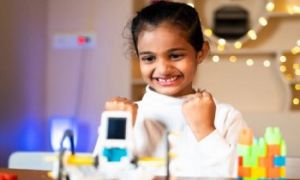EYLF Learning Outcome 5 focuses on effective communication, helping children develop verbal and non-verbal skills to express themselves confidently. The following article provides information on Key Learning Goals, Strategies To Support Learning Goals, Activities That Link To EYLF Learning Outcome 5, Lesson Plan Sample For EYLF Outcome 5, and more.
Key Learning Goals
-
Verbal and Non-Verbal Interaction
-
Encourage children to engage in conversations and express their thoughts.
-
Support non-verbal communication through gestures, facial expressions, and body language.
-
-
Literacy Development
-
Foster early reading and writing skills through storytelling and exposure to books.
-
Encourage children to recognize letters, words, and symbols.
-
-
Numeracy and Symbol Recognition
-
Help children understand numbers, patterns, and symbols in everyday contexts.
-
Support their ability to describe objects using mathematical language.
-
-
Creative Expression
-
Provide opportunities for children to express themselves through music, art, and drama.
-
Encourage storytelling and role-playing activities.
-
Strategies To Support Learning Goals
Here are some strategies to support learning goals for EYLF Learning Outcome 5, which focuses on effective communication:
1. Encouraging Verbal and Non-Verbal Interaction
-
Conversation Circles: Create opportunities for children to engage in discussions and express their thoughts in small groups.
-
Gesture and Expression Games: Help children understand facial expressions and body language by using mirror play and role-playing activities.
2. Literacy Development Strategies
-
Storytelling with Props: Use puppets and visual aids to bring stories to life and enhance engagement.
-
Interactive Reading: Encourage children to predict story endings, ask questions, and relate stories to their own experiences.
3. Numeracy and Symbol Recognition
-
Play-Based Learning: Use matching games, puzzles, and counting activities to introduce numerical concepts.
-
Environmental Print Exposure: Label different classroom areas with words and numbers to familiarize children with written language in daily life.
4. Creative Expression
-
Music and Movement: Introduce rhymes, songs, and dance to build confidence in verbal communication.
-
Drama and Role-Play: Encourage children to act out different roles, improving their ability to express ideas and emotions.
5. Fostering Digital Literacy
-
Guided Technology Use: Introduce child-friendly apps that support storytelling, letter recognition, and audio recordings of their thoughts.
-
Exploring Media: Encourage children to listen to recorded stories and use picture-based communication tools.
Activities That Link To EYLF Learning Outcome 5
1. Storytelling and Interactive Reading
-
Story Retelling: After reading a book, encourage children to retell the story in their own words.
-
Acting Out Stories: Children can use props or puppets to bring a story to life.
-
Picture Walks: Before reading, have children describe what they see in the illustrations.
2. Literacy and Writing Activities
-
Letter and Sound Hunts: Children search for objects in the room that start with a certain letter or sound.
-
Name Recognition: Encourage children to write or trace their own names using different materials.
-
Journal Writing: Offer drawing and writing journals where children can express their thoughts.
3. Numeracy and Symbol Awareness
-
Environmental Print Exploration: Help children recognize familiar logos, signs, and labels.
-
Counting and Sorting: Activities like sorting colored blocks or matching numerals with quantities.
-
Pattern Recognition: Encourage children to create patterns using beads or paper cutouts.
4. Creative Expression
-
Music and Singing: Introduce songs with repetitive phrases to strengthen language skills.
-
Drama and Role-Play: Let children take on different roles in imaginary play.
-
Art and Expression: Provide opportunities for children to illustrate their ideas and describe their creations.
5. Conversations and Social Interaction
-
Small Group Discussions: Facilitate meaningful conversations where children listen and respond.
-
Question and Answer Games: Encourage curiosity by allowing children to ask and answer questions.
-
Emotion Sharing Circles: Children discuss their feelings and experiences with peers.
Lesson Plan Sample For EYLF Outcome 5
Lesson Plan: "Express Yourself!"
Objective: To encourage children to develop verbal and non-verbal communication skills through engaging activities.
Learning Goals:
-
Verbal Interaction: Encourage children to express thoughts and ideas confidently.
-
Non-Verbal Communication: Support children in using gestures, facial expressions, and body language.
-
Literacy Development: Foster early reading and writing skills.
-
Creative Expression: Provide opportunities for storytelling, music, and art.
Materials Needed:
-
Storybooks
-
Puppets
-
Art supplies (paper, crayons, markers)
-
Music player
-
Flashcards with emotions
Activities:
-
Storytelling Circle (20 minutes)
-
Read a story aloud and encourage children to predict the ending.
-
Ask them to retell the story using puppets.
-
-
Emotion Charades (15 minutes)
-
Use flashcards with different emotions.
-
Children act out the emotion while others guess.
-
-
Music and Movement (20 minutes)
-
Play songs with repetitive phrases to strengthen language skills.
-
Encourage children to sing along and create dance moves.
-
-
Art and Expression (25 minutes)
-
Children draw a picture and describe their artwork to the group.
-
Encourage them to use descriptive words and emotions.
-
-
Group Discussion (15 minutes)
-
Facilitate a conversation where children share their thoughts on the activities.
-
Encourage them to listen and respond to their peers.
-
Reflection and Closing (10 minutes)
-
Ask children what they enjoyed the most.
-
End with a calming activity, like deep breathing or listening to soft music.
Further Reading
Learning Goals And Activities To Achieve EYLF Learning Outcome 1
Learning Goals And Activities To Achieve EYLF Learning Outcome 2
Learning Goals And Activities To Achieve EYLF Learning Outcome 3
Learning Goals And Activities To Achieve EYLF Learning Outcome 4




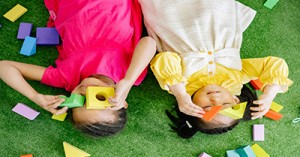


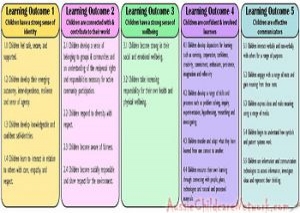 Here is the list of the EYLF Learning Outcomes that you can use as a guide or reference for your documentation and planning. The EYLF
Here is the list of the EYLF Learning Outcomes that you can use as a guide or reference for your documentation and planning. The EYLF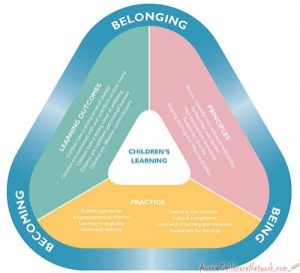 The EYLF is a guide which consists of Principles, Practices and 5 main Learning Outcomes along with each of their sub outcomes, based on identity,
The EYLF is a guide which consists of Principles, Practices and 5 main Learning Outcomes along with each of their sub outcomes, based on identity, This is a guide on How to Write a Learning Story. It provides information on What Is A Learning Story, Writing A Learning Story, Sample
This is a guide on How to Write a Learning Story. It provides information on What Is A Learning Story, Writing A Learning Story, Sample One of the most important types of documentation methods that educators needs to be familiar with are “observations”. Observations are crucial for all early childhood
One of the most important types of documentation methods that educators needs to be familiar with are “observations”. Observations are crucial for all early childhood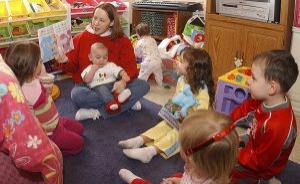 To support children achieve learning outcomes from the EYLF Framework, the following list gives educators examples of how to promote children's learning in each individual
To support children achieve learning outcomes from the EYLF Framework, the following list gives educators examples of how to promote children's learning in each individual Reflective practice is learning from everyday situations and issues and concerns that arise which form part of our daily routine while working in an early
Reflective practice is learning from everyday situations and issues and concerns that arise which form part of our daily routine while working in an early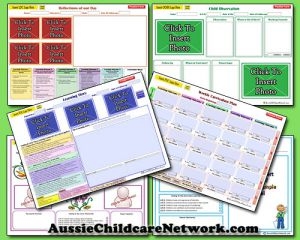 Within Australia, Programming and Planning is reflected and supported by the Early Years Learning Framework. Educators within early childhood settings, use the EYLF to guide
Within Australia, Programming and Planning is reflected and supported by the Early Years Learning Framework. Educators within early childhood settings, use the EYLF to guide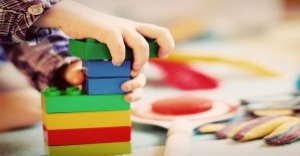 When observing children, it's important that we use a range of different observation methods from running records, learning stories to photographs and work samples. Using
When observing children, it's important that we use a range of different observation methods from running records, learning stories to photographs and work samples. Using This is a guide for educators on what to observe under each sub learning outcome from the EYLF Framework, when a child is engaged in
This is a guide for educators on what to observe under each sub learning outcome from the EYLF Framework, when a child is engaged in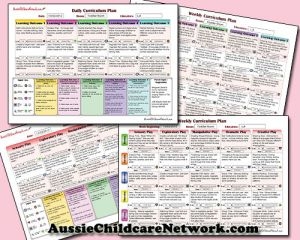 The Early Years Learning Framework describes the curriculum as “all the interactions, experiences, activities, routines and events, planned and unplanned, that occur in an environment
The Early Years Learning Framework describes the curriculum as “all the interactions, experiences, activities, routines and events, planned and unplanned, that occur in an environment